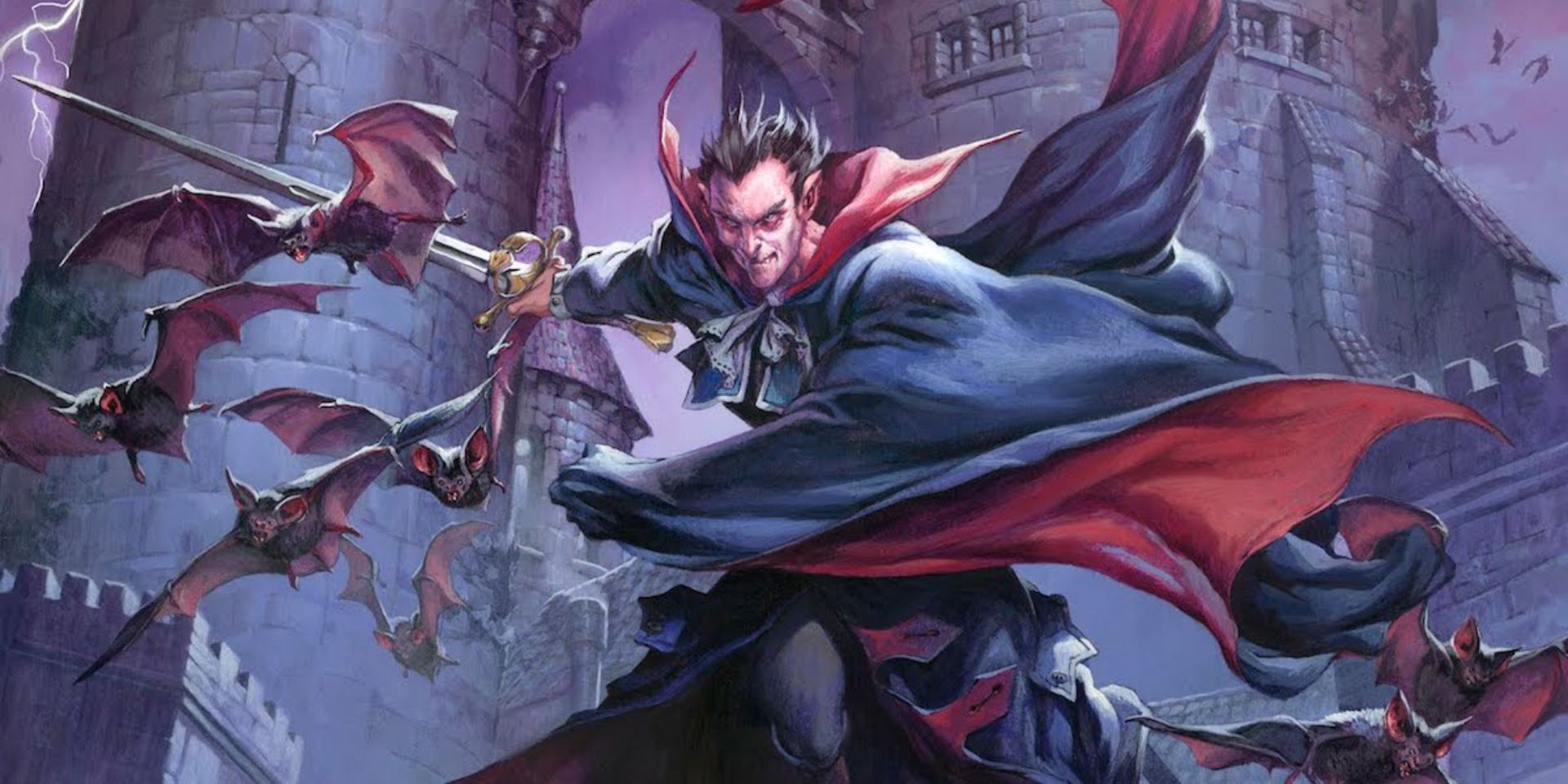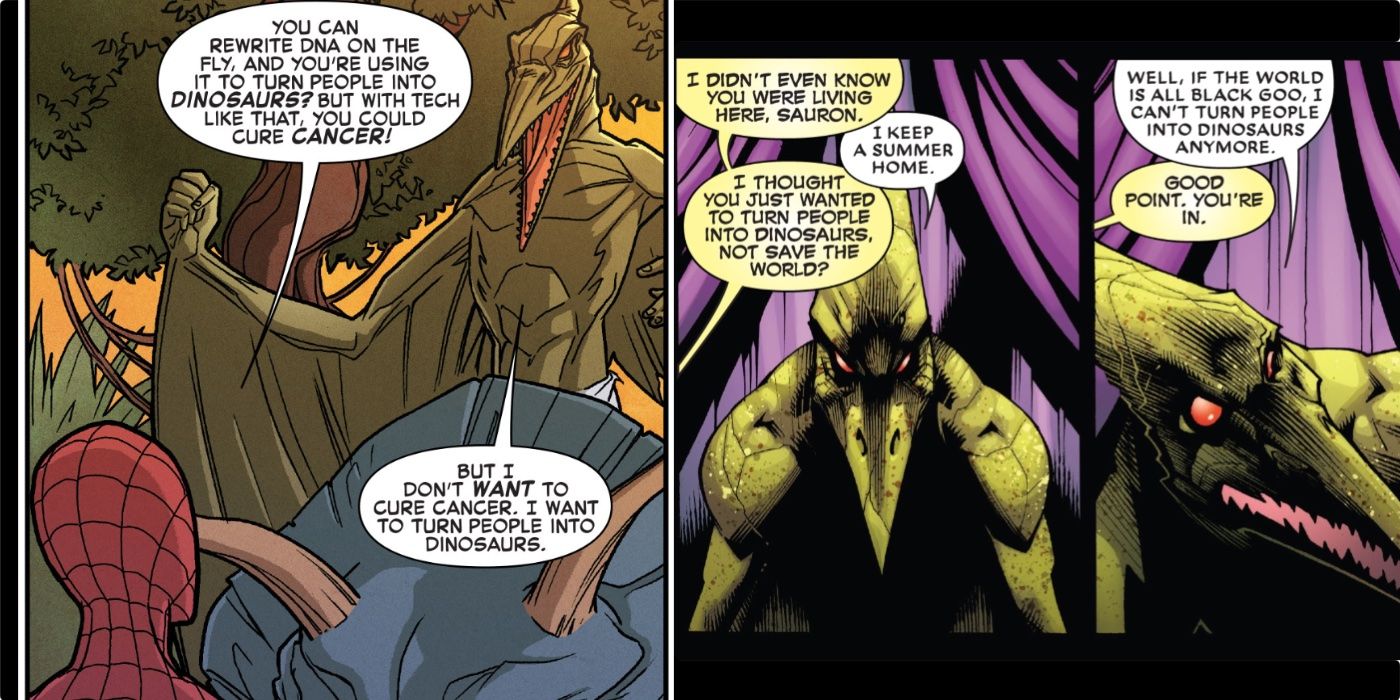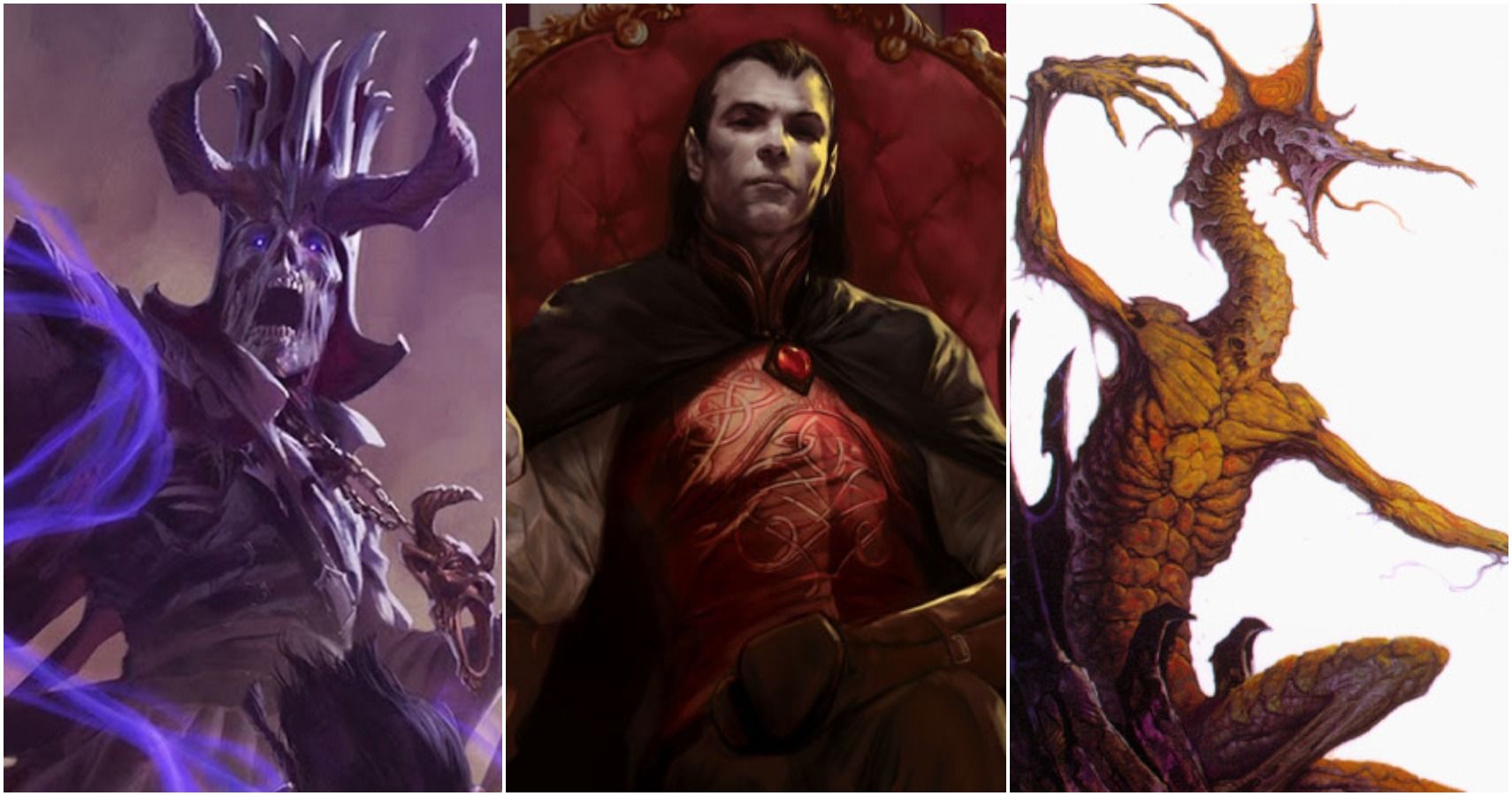It can be challenging for Game Masters and players of tabletop RPGs like Dungeons & Dragons to create clever villains distinct from Saturday-morning cartoon stereotypes, yet there are few characters as cool as the villainous mastermind. To this end, the tips, tricks, and guidelines in this article are meant to help RPG gamers put themselves in the shoes of "Masterminds" and craft villainous plans that are coherent and competent.
What is a villain, exactly? In some stories, a villain tries to tear apart or destabilize a relatively functional society into order to profit from the chaos, or re-make the world order into something more aligned with their twisted sensibilities. The comic-book mad scientists trying to take over the world are great examples, or mad criminals like the Joker who relish chaos and madness. Other villains are invested in preserving or strengthening an unfair status quo for their own sake, such as dictators ruling an oppressed state, crime bosses exploiting the have-nots of society, or religious inquisitors persecuting heretics. The consistent through-line of these typically Lawful Evil, Chaotic Evil, and Neutral Evil villains is a large degree of ego and a willingness to de-personalize the people around them, seeing allies, enemies, and strangers as tools to be used up, rather than people with dreams just as valid as theirs.
When running a tabletop RPG campaign centered on conflicts against villainous masterminds, a Dungeon Master or Game Master needs to make sure their villains are dangerously competent (though not invincible) and at least occasionally relatable (though still ultimately villainous). Most importantly, a villain's deeds and behaviors should never outshine or invalidate the actions of player characters, but give them a chance to grow beyond said villain's ambitions. To maintain this balance between "melodramatic klutz" and "frustratingly invincible villain," GMs and players interested in creating friendly bad guys can draw on the following principles to shape their character creation and decision-making process.
Villainous Mastermind Tip #1: Give A Villain A Direct, Straightforward Goal
Rule the world. Gain the power of a god. Live forever. Become filthy rich. Become famous. Become loved or feared by all. Cleanse the world of sin. Survive at all costs. Turn people into dinosaurs like Sauron did in Spider-Man. The goal of a villainous mastermind can be rationally mundane or utterly bonkers. What's important is that a villain's true, final goal is clear, direct, and something they genuinely desire. No one hatches a year-long scheme to take over the world if they they're not passionate about turning it into a reality. Of course, nothing stops a villain from trying to keep their true goals secret until the very last moment, but Game Masters should not underestimate the ability of their players to sniff out a villain's true nature and motives.
Villainous Mastermind Tip #2: Come Up With Multiple Evil Plans To Achieve The Villain's Goal
If there's any truism Game Masters running a campaign should remember, it's this: Players will always do something you didn't plan for. This roleplaying principle holds doubly true for the evil strategies of a GM's villainous NPC. The more complicated an evil plan is, the more likely a player is to disrupt it with out-of-the-box thinking (or really, really good dice rolls). To counter this, a GM should give their mastermind at least three evil plans leading to the same final goal; if the player wrecks one plan, a villain can simply funnel all of their resources into the others. Whenever possible, a GM should also create a flowchart displaying the multiple phases in each evil plan and the possible outcomes of each phase. If an evil plan has too many steps in it, or too many possible points of failure, the villain (and GM) should go back to the literal drawing board.
Villainous Mastermind Tip #3: A Villain's Choices Should Always Be Pragmatic (In Their Head, At Least)
In a chilling monologue near the end of The Hunger Games: Mockingjay - Part 2, President Snow, tyrannical ruler of Panem, cheerfully admits to Katniss that he's "...not above killing children. But I'm not wasteful. I take life for specific reasons." This statement of baldly pragmatic amorality is a good principle both Game Masters and RPG players should keep in mind when they have their "evil characters" make "evil decisions." Tempting as it may be to have a villain kick puppies and eat babies, villains are far more threatening (and eerily relatable) when their actions have a twisted form of logic behind them. This doesn't mean a villain needs to be sane, rational, or without flaws, but even the most unstable villains should make awful decisions consistent with the desire they pursue - "If I do this bad thing, I'll get something I want."
Villainous Mastermind Tip #4: Villains Shouldn't Start Out Hostile To The Heroes
Most gamers today don't start out playing tabletop RPGs like Dungeons & Dragons. Instead, their RPGs are often played on home computers or consoles, which fundamentally narrows the field of possibility for antagonists. A computer RPG can't simulate every possibility, so it constrains the actions of both players and NPCs to maintain a cohesive plot; merchants will almost always sell goods to player characters, enemies will almost always attack them on sight, and villainous masterminds will almost always find a reason to put the main characters on their personal hit list. By comparison, a tabletop RPG has fewer limitations, meaning villainous mastermind NPCs don't need to be hostile towards player characters upon first encounter. An adventuring party that hasn't hindered a villain's plan yet might be ignored, sweet-talked, spied upon, or just bribed to keep their distance, and after a demonstration of significant competence or combat prowess, they might even be scouted out and given a tempting job offer by a villain with an opportunistic streak.
Of course, at the end of the day if the party proves to be a persistent nuisance or genuine threat to an evil genius' plans for world domination, the villain should probably just send their best people to murder them. That's only common sense!





